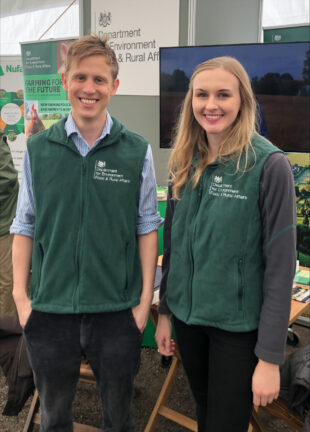https://defrafarming.blog.gov.uk/provide-supplementary-summer-food-for-birds/
Provide supplementary summer food for birds
The guidance on this page is for SFI pilot participants only. Please visit GOV.UK for the official Sustainable Farming Incentive scheme guidance.
Find out how land managers can spread seed during spring and summer to increase turtle dove populations and help them raise more chicks successfully.
If you’re completing this action as part of the Sustainable Farming Incentive pilot, how you do it is up to you.
The advice on this page can help you get better environmental and business benefits, but you do not have to follow it to get paid.
Why turtle doves need extra food in spring and summer
Turtle doves spend winter in Africa and migrate to England in spring to breed.
Turtle doves are the UK’s fastest declining bird species. The most important cause of their decline is the loss of feeding habitat where they nest. This reduces the number of chicks they can successfully raise each year.
Turtle doves only eat seeds. Spreading seed on your land is a simple and effective way to increase the availability of food during the breeding season for turtle doves.
Turtle doves mainly breed in arable and mixed farmland. Use the Bird Atlas Mapstore to find out if turtle doves nest in your area.
You can provide extra food anywhere that turtle doves breed.
To maintain or increase bird populations, you also need to provide turtle doves with nesting sites and other food sources.
When to start spreading seed
Feed throughout the breeding season whenever turtle doves are present. Most turtle doves return to the UK from late April or early May.
As a guide, feed for at least 20 weeks between April and September.
Choosing the right feeding sites
You’ll need to have at least 2 feeding sites on your land.
Feed within 300 metres of turtle dove nesting habitat. Turtle doves nest in tall, dense hedges or scrub. They often nest near fresh water, like ponds.
Turtle doves feed on the ground and will not forage in tall or dense vegetation. Spread seed on areas that are:
- bare and free of vegetation, or with patchy vegetation less than 15cm tall
- at least 30% bare ground in April, preferably 50 to 60% between April and September
- not below a tree canopy
Suitable areas include:
- stubbles
- cultivated fallow areas
- bare or thinly vegetated farm tracks
- hard-standing areas like beet pads
- thinly vegetated chalky grassland, sandy grassland or field margins
You can mow or shallow cultivate feeding sites to maintain enough bare ground and short vegetation.
Ideally, keep feeding areas in the same place through the breeding season.
You can move to another suitable area nearby if the original feeding site becomes too vegetated or pests are a problem.
The recommended seed mix
This seed mix provides high nutritional value at a reasonable price.
| Seed | Rate |
|---|---|
| Oilseed rape | 35% |
| White millet | 35% |
| Wheat | 10% |
| Canary seed | 10% |
| Sunflower hearts | 10% |
You can use tailings (small seeds removed from the harvested crop) in your seed mix. If you use tailings make sure they do not exceed 20% of the seed mix by weight.
You must use organic seed if you farm organically or are converting to organic farming. If you want to use non-organic seed, you’ll need approval from your organic certification body.
How much to feed
Try to always have food available at your feeding sites.
To start with, spread around 5kg of seed once a week at each feeding site. Check regularly and adjust how often you feed or the amount you use, to match what the birds need.
There should not be large amounts of seed left uneaten. If you see this, stop feeding for at least a week and lower the amount of seed you spread.
How to spread seed effectively
Try for an even spread of seed across a 50 metre by 5 metre strip.
Spread seed either by hand or using equipment, such as a clean slug pellet spreader or purpose-built spreader.
Turtle doves are vulnerable to the disease trichomoniasis. Trials have shown that these feeding methods are effective and reduce the risk of disease transmission between birds.
To maintain good hygiene and discourage pests like rats:
- spin or scatter seed only
- do not use hoppers and avoid creating piles or long trails of seed
- do not spread seed too thickly
Move feeding locations at least every other year to reduce pathogen build up.


